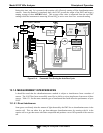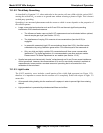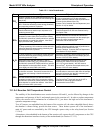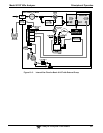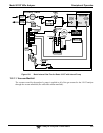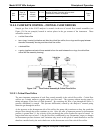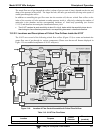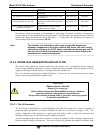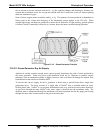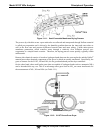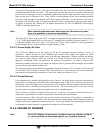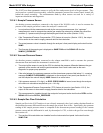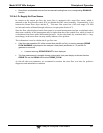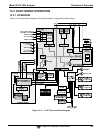
Model 9110T NOx Analyzer Principles of Operation
Teledyne Analytical Instruments 331
The actual flow rate of gas through the orifice (volume of gas per unit of time), depends on the size and
shape of the aperture in the orifice. The larger the hole, the more gas molecules (moving at the speed of
sound) pass through the orifice.
In addition to controlling the gas flow rates into the reaction cell, the two critical flow orifices at the
inlets of the reaction cell also maintain an under-pressure inside it, effectively reducing the number of
molecules in the chamber and the corresponding incidence of third body quenching (see Section
13.1.5.2) and therefore increasing the chemiluminescence yield.
The 9110T reaches its peak sensitivity at about 2 in-Hg-A, below which the sensitivity drops due to
there being too few molecules present and a corresponding decrease in chemiluminescence.
13.2.2.2. Locations and Descriptions of Critical Flow Orifices Inside the 9110T
The 9110T uses several of the following critical flow orifices (Figure 13-9) to create and maintain the
proper flow rate of gas through its various components. (Please note that not all features displayed in
Figure 13-9 are standard components of 9110T analyzers).
SAMPLE
PRESSURE
SENSOR
VACUUM
PRESSURE
SENSOR
O
3
FLOW
SENSOR
PMT
PERMAPURE
DRYER
NO/NO
X
VALVE
AUTOZERO
VALVE
SAMPLE/ CAL
VALVE
ZERO/SPAN
VALVE
Figure 13-9: Location of Flow Control Assemblies & Critical Flow Orifices
Table 13-3: 9110T Gas Flow Rates
Location Purpose
Orifice
Diameter
Flow rate
(nominal)
Sample gas inlet of reaction cell
Controls rate of flow of sample gas into the
0.010” (0.25 mm) 500 cm³/min



